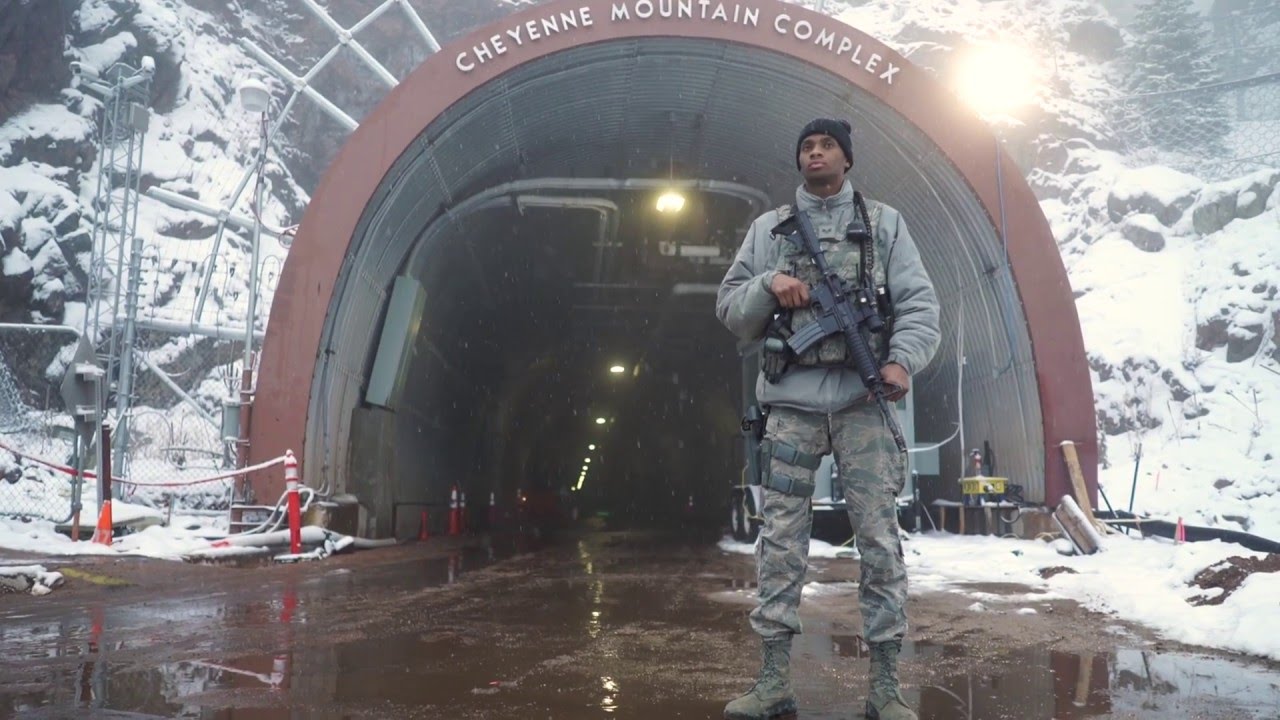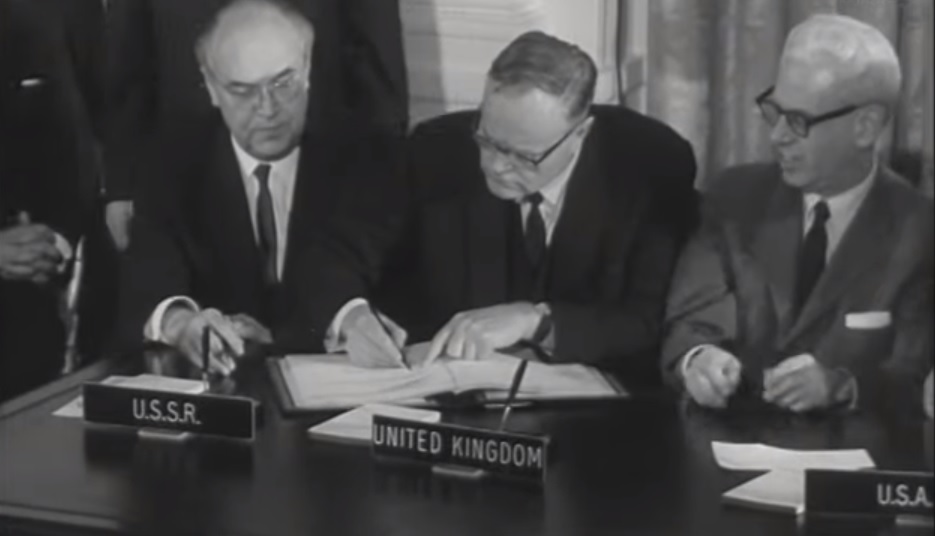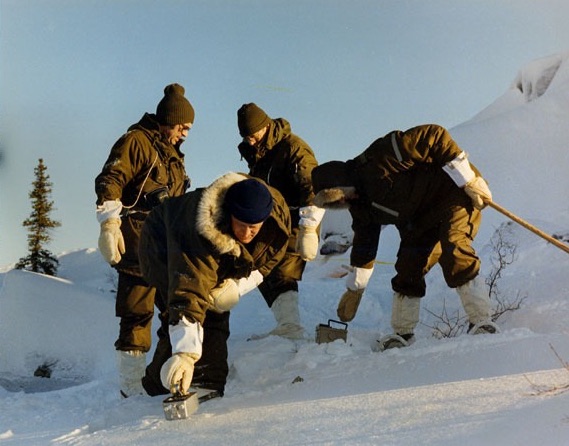A History of Space Situational Awareness (Part 1)
The Cold War spawns a new theatre of war.
Lewis Foggie • 26 October, 2020
This article is part 1 of a 2-part series.
The Cold War gave rise to the notion of Space Situational Awareness (SSA). It has been said that war leads to rapid technological advancement - the Cold War was certainly no exception. Advancements in space defence systems and technology were a direct consequence of the Cold War. In order to understand the severity of the rising tensions and to understand SSA in a modern context, it is worth getting familiar with the most impactful events associated with SSA in history, beginning with the launch of the first satellite to orbit the earth.
A Threat From Above
1957 – Sputnik, the first satellite to orbit the earth, is launched by the Soviets on an intercontinental ballistic missile (that's the same launch vehicle which could send a nuke from Russia over to the US). 'Sputnik' is simply the Russian word for 'satellite'. 3 weeks later its batteries die and it continues to orbit for two months like a silent ghost before falling back into the atmosphere and burning on reentry. The fallen Sputnik satellite was not dangerous – its purpose was merely to reveal information about the upper atmosphere. This doesn’t make it any less foreboding in the eyes of the Americans, who see the Soviet Union taking the lead in the space race relatively near the beginning of the Cold War (1947 – 1991), further raising tensions. A Soviet lead cannot be accepted.

1959 – In response to the threat from space, Project Spacetrack is formed in the US by two German expatriates with the aim of tracking all artificial Earth satellites as well as leftover booster rockets and debris. All orbit vectors are painstakingly calculated by hand, using a mechanical calculator. By 1960 Project Spacetrack has around 150 sensors watching the skies. In 1961 the 1st Aerospace Control Squadron is formed to propagate the mission directive. In 1966 the 1st Aerospace Control Squadron moves operations to The Cheyenne Mountain Complex – an iconic location for readers who have seen the Terminator movies. It was this very mountain in which the protagonists of Terminator discover the system core of Skynet, the evil AI program trying to take over the world. As a side note, there exists in the present day a satellite constellation named “Skynet” which is rather ominous.
The Arms Race Builds Momentum
1960 – Whilst Project Spacetrack surveys from below, the Missile Defence Alarm System (MIDAS) will patrol the heavens. The US launches MIDAS, its first generation of space-based early warning systems. MIDAS would be composed of 12 infrared satellites orbiting the Earth providing early warning to Soviet inter-ballistic missile launches from the ground. This technological leap is an early step in the nuclear arms race which even in the present day maintains momentum as nations must continuously develop their nuclear attack and defence systems to maintain the apparent safety of Mutual Assured Destruction – should one nation attack another, both the attacker and defender are certain to be annihilated. An early warning system ensures a nation can counter with their own nuclear missiles before their own inevitable destruction.
The United Nations Takes Action

1967 – The United Nations (UN) writes The Outer Space Treaty to form the basis of International Space Law. These laws prevent weaponisation and territorial claims to maintain peace in space:
“...calling upon States to refrain from placing in orbit around the earth any objects carrying nuclear weapons or any other kinds of weapons of mass destruction or from installing such weapons on celestial bodies...
“...Outer space, including the moon and other celestial bodies, is not subject to national appropriation by claim of sovereignty, by means of use or occupation, or by any other means.”
Side note: In the present day space law has evolved and developed further. The Karman line is 100km high and defines the boundary between space and not space. Above this line, space laws hold, and below this line, they don't. Looking further ahead it will be interesting to see how laws and boundaries expand and are defined to distinguish laws in particular space sectors, on particular bodies, especially following the colonisation of Mars and the beginning of asteroid mining. Will Mars be considered a nation with its own sovereignty or will its population come under some term other than “nation”? Will a space mining corporation be granted ownership rights to claimed asteroids (which would alter the Outer Space Treaty)?
1972 – The US and Soviets sign The Treaty on the Limitation of Anti-Ballistic Missile Systems. The treaty prohibits any kind of interference with a nations ability to verify compliance of the other with the Outer Space Treaty – this means reconnaissance satellites are implicitly protected, as these particular satellites can be used to check whether or not another nation has space-based nuclear weapons in orbit. Trustworthiness is a virtue, but the US and Soviets certainly don't trust each other to uphold their agreements unless supervised. The Treaty on the Limitation of Anti-Ballistic Missile Systems also means both the US and Russia are limited to have only 2 anti-ballistic missile deployment areas: which are to be:
“...so located that they cannot provide a nationwide ABM defense or become the basis for developing one.”
Effectively, the two countries agree to handicap themselves so that one attack on the other would indeed lead to Mutual Assured Destruction. The zones chosen allow each nation to protect its own capital city and one ICBM launch area. The question is – what’s to stop a nation developing a network of covert, undetectable anti-ballistic missile systems providing nationwide defence? What would be the consequences of such a breach of treaty? A likely consequence would be a trade embargo - limiting trade to a nation in violation of the treaty - enforced by the UN.
Man-Made Meteors
1978 – Kosmos 954, a Soviet satellite, crash-lands in northern Canada and scatters radioactive uranium around the countryside. Uranium, the same radioactive material which would power the Chernobyl nuclear power plant in 1986, incidentally is also useful for powering satellites. (Have you seen the HBO Chernobyl series? Highly recommended!) An effort dubbed Operation Morning Light is setup to clear the mess. Men on the ground search with hand-held radiation detectors to find the debris. With assistance from air support and two sweeps of a 124,000 square kilometre area, they recover 10 pieces of radioactive satellite remnants, one of which is so radiative enough it could kill a person if they spent a few hours in physical contact with it. Usually a disposal system would eject the reactor core into a safe disposal orbit but on this occasion it had failed.

1979 – Skylab, the United States’ first space station, is on a rapidly decaying orbit, falling towards the Earth much earlier than expected. Design engineers lacking foresight neglected to add a control and navigation system to bring Skylab back to Earth after its planned 9-year lifespan, and now Skylab is coming down by accident. It does have a booster - just not one capable of the kind of adjustments required for the unplanned maneuvers needed. Ironically, the lack of systems to bring Skylab back to Earth also means Skylab can't raise its orbit. This is worrisome as Skylab won’t just burn up in the atmosphere - it could actually cause some damage if debris drops on a populous location. At least it's not radioactive.
The unexpected Soviet satellite reentry of last year is still fresh in their memories, and the public are somewhat unhappy. NASA considers sending the Space Shuttle to pick Skylab up and boost it back up to a higher orbit. They decide against this plan, in favour of using the existing Skylab booster to crudely adjust their trajectory to splash down safely in the ocean. Adjustments are made, and the world holds its breath to see where the 77-tonne beast will land. The Belgians plan to sound air-raid type sirens should debris fall near them. Thankfully, the adjustment is performed well enough that large chunks fall down into the ocean and some smaller pieces of debris hit western Australia. Nobody is hurt, though it is a stark reminder of the importance of keeping track of satellite orbits and planning ahead accordingly. An unplanned reentry due to an unpredictably rapidly decaying orbit could cost human lives.
Summary
With the latter two incidents causing somewhat of a fuss, it is becoming clear that Space Situational Awareness is of utmost importance not just to maintain military awareness of hostile threats but also to protect civilians from direct danger. In an arms race where constant vigilance is a necessity, and signed Treaties perpetuate and solidify the idea that Mutual Assured Destruction is the only way forward, militarising space is an escalating affair, and heavily regulated. But we haven't even talked about blowing things up yet... We will in a new article coming next week!